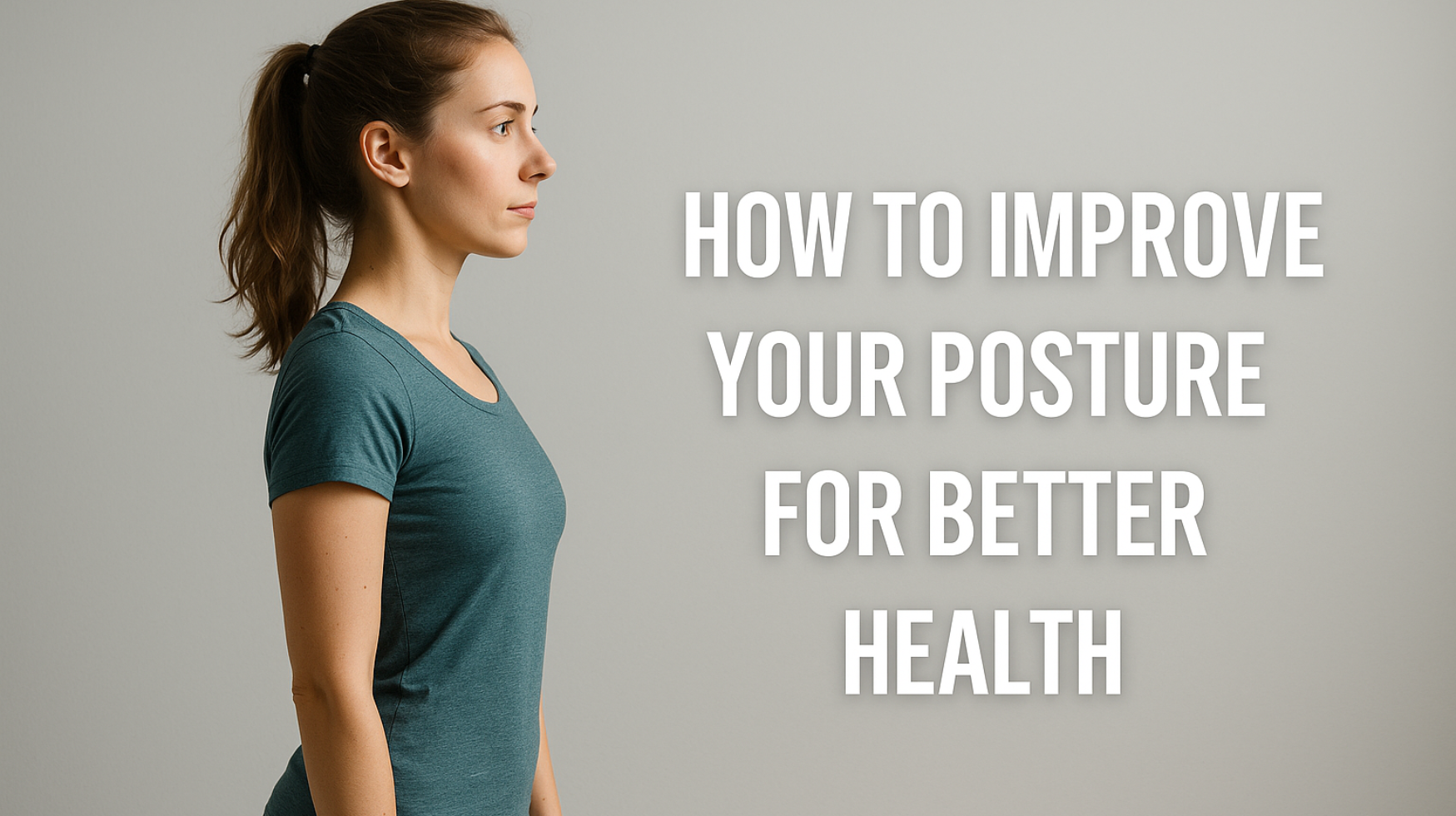Introduction: Posture — More Than Just Standing Straight
When people hear “posture,” they often imagine their parents telling them to “stand up straight.” While that’s part of the picture, posture is much more than simply keeping your shoulders back. It’s about the alignment of your bones, muscles, and joints so that your body functions at its best with minimal strain.
Good posture impacts nearly every aspect of your life. It affects your appearance, confidence, and energy levels, but also your breathing, circulation, digestion, and even mood. Poor posture, on the other hand, can cause chronic pain, reduce lung capacity, and contribute to fatigue.
The good news? With consistent practice, you can retrain your body to adopt healthier alignment, improve your comfort, and reduce the risk of injuries over time.
In this comprehensive guide, we’ll cover:
- The science behind good posture
- Common posture problems and their causes
- Practical, step-by-step strategies to improve alignment
- Exercises and stretches for daily life
- How to make posture-friendly changes at work and home
The Science Behind Good Posture
Musculoskeletal Alignment
Your body’s skeleton is supported by muscles, ligaments, and tendons. Good posture keeps these parts balanced, reducing unnecessary stress on joints. This means your muscles don’t have to work harder than necessary just to hold you upright.
Nervous System Health
When you’re aligned, your spinal cord and nerves have more space to function without compression. Poor posture can lead to nerve impingements, causing tingling, pain, or weakness.
Circulation and Organ Function
Slouching compresses your chest and abdominal cavities, which can affect lung capacity, digestion, and even blood flow. Standing tall allows your organs to function more efficiently.
Psychological Impact
A 2017 study published in Health Psychology found that sitting upright can increase self-esteem and mood, while slouching may increase stress and negative thoughts.
Common Posture Problems and Their Causes
1. Forward Head Posture
- What it is: The head juts forward, increasing strain on the neck and upper back.
- Cause: Excessive phone/computer use, weak neck muscles.
- Consequence: Tension headaches, neck pain.
2. Rounded Shoulders
- What it is: Shoulders roll forward, collapsing the chest.
- Cause: Desk jobs, weak upper back muscles.
- Consequence: Restricted breathing, upper back pain.
3. Anterior Pelvic Tilt
- What it is: Hips tilt forward, creating an exaggerated lower back curve.
- Cause: Sitting for long periods, tight hip flexors, weak glutes.
- Consequence: Lower back pain, hamstring tightness.
4. Kyphosis (Hunchback)
- What it is: Excessive rounding of the upper back.
- Cause: Poor posture habits, osteoporosis.
- Consequence: Back stiffness, balance issues.
Step 1: Awareness — The Foundation of Good Posture
You can’t fix what you don’t notice.
Self-Check Methods:
- Wall Test: Stand against a wall—heels, hips, shoulders, and head touching. If this feels unnatural, you likely have alignment issues.
- Mirror Check: Side-view photos can reveal slouching or forward head position.
Daily Tip: Set a phone alarm every hour to remind yourself to check your posture.
Step 2: Strengthen the Right Muscles
A strong core, back, and shoulders support your spine and keep you upright without effort.
Best Strengthening Exercises:
- Planks – Builds deep core stability.
- Rows (with bands or weights) – Strengthens upper back.
- Reverse Flies – Targets rear shoulder muscles.
- Bird Dog – Improves spinal stability and coordination.
Routine: Perform each exercise 2–3 times a week, 2–3 sets of 10–15 reps.
Step 3: Stretch Tight Muscles
When you sit or slouch for long periods, certain muscles shorten and pull you out of alignment.
Key Stretches:
- Chest Opener: Stand in a doorway, forearms on the frame, gently lean forward.
- Neck Side Stretch: Tilt ear toward shoulder, hold for 20–30 seconds.
- Hip Flexor Stretch: Kneel on one knee, push hips forward slightly.
Tip: Hold each stretch for at least 20 seconds to allow the muscle to release.
Step 4: Ergonomics at Work and Home
Your environment influences your posture more than you think.
Desk Setup Checklist:
- Monitor at eye level to avoid forward head tilt.
- Chair height allows knees to be at 90°.
- Feet flat on the floor or supported by a footrest.
- Keyboard and mouse close enough to prevent reaching.
For Laptop Users:
Use a laptop stand with an external keyboard and mouse.
Step 5: Integrate Movement Breaks
Sitting too long is harmful even if your posture is perfect.
How to Apply:
- Stand and walk for 2–3 minutes every 30–60 minutes.
- Do shoulder rolls, chest stretches, and neck turns at your desk.
- Use stairs instead of elevators to keep your body active.
Step 6: Posture-Friendly Activities
Some physical activities naturally encourage better alignment:
- Yoga – Improves flexibility and body awareness.
- Pilates – Strengthens core and stabilizing muscles.
- Tai Chi – Promotes balance and gentle posture correction.
Step 7: Sleep Position for Healthy Posture
You spend about a third of your life sleeping, so your position matters.
- Back sleepers: Use a pillow under knees to reduce lower back strain.
- Side sleepers: Place a pillow between knees to align hips.
- Avoid sleeping on your stomach: It twists the neck and spine.
Step 8: Build Long-Term Postural Habits
Posture improvement isn’t instant—it’s a long-term habit.
Daily Actions:
- Be mindful when carrying bags—switch sides or use a backpack.
- Adjust car seats for upright sitting.
- Keep your phone at eye level instead of bending your neck.
Sample Daily Posture Routine
Morning:
- 5–7 minutes of stretching (chest opener, neck stretch, hip flexor)
- 1–2 minutes of deep breathing in an upright position
Midday:
- Desk posture check
- 2–3 minutes of standing and walking
Evening:
- 10 minutes of yoga or Pilates
- Relaxation stretch before bed
Final Thoughts: Posture as a Health Investment
Improving posture is not just about appearance—it’s about protecting your spine, improving organ function, boosting confidence, and preventing pain. With consistent effort, small daily actions can completely transform how you stand, sit, and move.
Think of posture as a lifelong investment in your health and quality of life. Every moment you spend aligning your body is a step toward more energy, less pain, and greater vitality.

